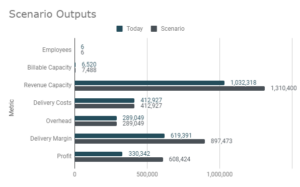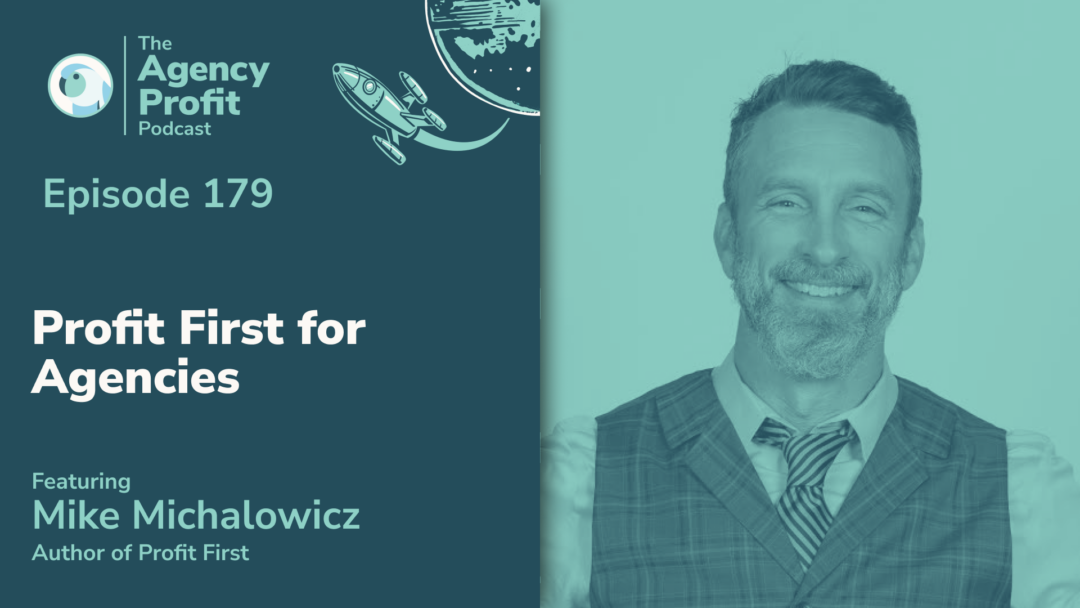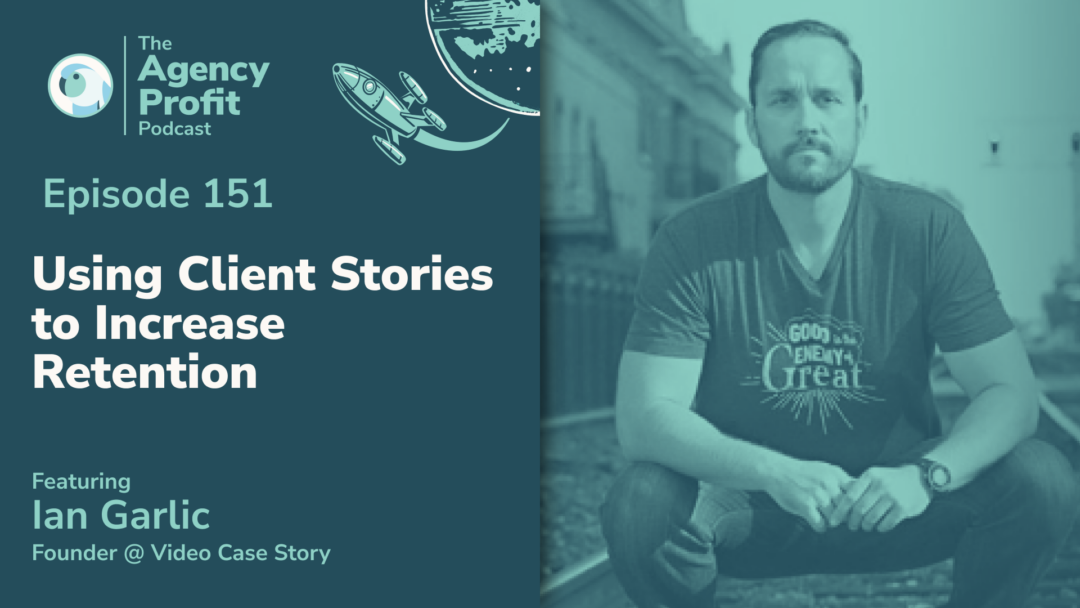I got an email recently from a reader asking for my opinion on structuring variable compensation for his team. I wanted to take the ideas that I shared with him in my response and package them up into something others could benefit from, so I decided to create this blog post.
While his question was mostly focused on compensation for sales teams, I thought it would be important to zoom out and share my broader thoughts on variable compensation models for agencies more broadly. While compensation models and benchmarking are not areas I would consider myself an expert in, I thought it was a topic that doesn’t get discussed enough and that might benefit from my point of view.
Variable compensation for your agency team members is nothing new. It’s been around for a while, and for good reason. It balances the risk between all parties, incentivizes company success, attracts top talent and accommodates scalability.
The ideal scenario that you can get yourself to is where you can develop a model that compensates your team members relative to the value that they’ve created. You want to make space for the chance that if you’ve got a top 1% performer, they’ll be compensated appropriately for their performance and that you’re happy paying that amount. A true win-win scenario.
Let’s discuss how to develop a variable compensation model and do it right the first time.
Things to Consider Before Choosing a Agency Compensation Model
There are a few different models we’ll go into in the next section. When choosing a model, here are a few things you need to consider.
- Who does this model apply to?
- Is it those on the front lines? What kind of role will this apply to? Will it be different for each member?
- What does this team member value?
- Do they value liquidity over absolute returns/upside? Or do they prefer a higher potential upside with less liquidity and more risk?
- What outcome are you trying to incentivize?
- Are you driving towards an exit? Trying to drive faster growth? Trying to drive higher profitability? Trying to maximize the retention of key employees? Each of these outcomes will influence how the incentive structure is thought about.
- What level of risk is each party taking on?
- How does this relate to industry benchmarks for a similar role?
- If the employer is taking on more risk, is it being balanced with less variable compensation?
- If the employee is taking on more risk, is it being balanced with a higher upside related to variable compensation?
- What can the employee influence in terms of reaching their conversion?
- How much influence does each employee have over the outcomes that determine their compensation? How many factors are totally out of their sphere of influence? The level of influence they have will shift the risk profile between the employer and the employee, as well as the level of ownership and incentivization that the compensation model drives.
- What is actually being measured?
- Can it be done with accuracy and consistency? How timely can those measurements be, and does that timeliness line up with the anticipated liquidity events for the employee?
- What is the target, ideally, for this team member?
- In many cases it will be important to set what is considered to be “On Target Earnings”, in other words, the amount of money an employee will make if all their target outcomes are achieved.
- How can you align incentives so that you’re excited to cut these big cheques for your team?
- At the end of the day, this model should be designed so that everyone wins together, and you as an employer are incentivised to pay your team as much as possible because it will mean you are experiencing outsized upside.
With that in mind, I have a few principles I believe in when it comes to incentivizing team members in a professional services business.
1. The metrics they are incentivized on should generally be within their reasonable sphere of influence.
For example, I wouldn’t incentivize most employees based on Net Profit because the decisions made about overhead spending will be largely out of their control. Net profit would be the best metric to incentivize the team in terms of sharing risk and building the right tension into a metric, but it’s not usually fair, given so much of that number is out of their control and sphere of influence and can easily be manipulated by executive leadership teams, or obfuscated by tax efficiency strategies.
2. The objective should be to keep the metrics and compensation model as simple as possible and ideally comprise of the fewest metrics possible. The goal is usually to find a “compound” metric that is closest to the bottom line while still remaining in their sphere of influence. For most organizations, this ends up being Delivery Margin (which your accounting team might call Gross Margin or Contribution Margin)
3. It’s important that the metric be “compound” in the sense that it has tension built into it that forces balanced decision-making. Delivery margin is a great metric for this because in order to optimize it, employees have to consider Average Billable Rate (pricing vs cost of delivery), utilization rates (making sure they are properly staffed relative to the work coming in) and Average Cost-Per-Hour (ACPH) which is avoiding over-paying for talent, bloating the team with senior talent, or having senior employees do a lot of work that is below their pay grade.
4. If you’re spending a lot of time trying to figure out how to cap the upside or are adding several metrics to try and add tension to the incentive structure – you’re probably going down the wrong path. A well-designed incentive structure should be open-ended enough that it can create flexibility about how something gets done and focus on a simple outcome that de-risks things. That allows more ownership to be created.
For example, one might think to compensate a sales rep more for new business generated from new clients as opposed to business generated from growing existing accounts. From my perspective, this is short-sighted and has a bias built into it based on what the principal thinks the path toward the outcome should be. If the target was achieved primarily by growing existing accounts, would that be a bad thing? Chances are the business would be better off for it as it’s much less expensive to retain and grow existing accounts, and the value of each new account is higher after those optimizations have been made. Leaving the outcome clear allows the team to find opportunities wherever they are and focus on driving to the outcome.
Types of Agency Compensation Models
On-Target-Earnings (OTE)
By strategically assigning the right people to the right tasks and distributing resources evenly, agencies can maximize productivity and
The idea for this model is that you and a team member set an “on-target earnings” number, which basically says, “If we hit all of our targets in this time period (let’s say a year), then you’ll get this amount of money.” It’s your earnings– if you’re on target. Now, the way it works is that it’s split between salary (guaranteed) and bonus/commission (variable).
The split between what percentage of their compensation is guaranteed (salary) vs how much is variable (bonus/commission) can vary widely, but will largely be determined by a person’s role. For sales teams, there tends to be a more even sharing of risk (50/50) with some compensation models moving more towards commission only. As a general rule of thumb, the more risk the employee is taking on, the higher their OTE should be relative to industry ranges as a way to compensate them for taking on that risk.
For other more standard roles, it’s more common to see the larger share of compensation being salary with smaller variable splits (70/30 or 80/20)
Let’s discuss two common options for the variable side – commission vs bonus.
Base + Commission
In the Base + Commission model, a salary can be offered as a base, and then a percentage commission (i.e. percent of delivery profits over a certain amount, and/or a percentage of the agency’s growth rate) can be added after the fact.
The simplest forms of commission are generally applied to things like revenue, or better yet Agency Gross Income. For example, a salesperson might get a 10% commission on any Agency Gross Income they bring into the business.
Example
A more advanced example of compensating on things like Delivery Margin and Growth Rate might look like this:
Let’s go through a scenario where we had an Agency Gross Income of $1.8M which represented 40% YoY growth, and had a Delivery Profit for the year was $1M and which represented a Delivery Margin of 55.5%. The agreed upon comp model could look something like a $90K salary, 10% of delivery profits above 45%, plus 1/10th of our growth rate.
The formula to determine the variable compensation would look like this:
(AGI * YoY Growth %) * (Delivery Margin % – 45 + Growth Rate %)
In this instance, we would take 40% of 1.8M and subtract it from the delivery profit ($1m – 720k = $280k) and then take the 10.5% bonus and add on 1/10th of the growth rate for a total of 13% bonus rate. So the bonus for the team member in this instance would be $280k x 13% = $36,400 in variable compensation.
The base + commission model is useful when absolute targets are hard to set, and we instead want to focus more on relative performance. It’s especially useful when there is a lot of uncertainty, and we’re moving towards a compensation model that pushes more risk onto the employee.
Base + Bonus
The base + bonus plan shares similarities with the commission plan, as it includes a fixed base salary that is guaranteed regardless of performance. However, the key distinction lies in how the variable compensation is calculated. In the commission model, the variable compensation is a relative value (a percentage of another metric) whereas in the bonus model, there is generally a predetermined bonus amount, and the percentage of that bonus that is paid out will be determined based on the percentage of a certain target that is attained. This is much better suited for instances where performance will be measured in absolute terms rather than relative terms.
Example
Let’s say an employee has an OTE of $100,000 with a 50/50 base + bonus split.This means a base salary of $50,000 per year and a variable compensation of $50,000. In this example, their target is set to $1M in Delivery Profit for the year. If at the end of the year we landed at $800k – the bonus attainment would be 80% ($50,000 x 0.8 = $40,000) for a total compensation of $90,000 for the year.
For example, if the company achieved $1.3M in Delivery Profits relative to their target of $1M, they could receive 130% of their bonus, or in this case $50,000 x 1.3 = $65,000
Basing compensation on a bonus model does not necessarily mean that bonuses are capped at 100%, some companies will still offer over 100% bonus attainment if targets are exceeded, and in some cases may even offer accelerators beyond target attainment.
Base + Equity
In a base + equity compensation model, employees at your agency would receive a fixed base salary along with ownership in the company in the form of stock or stock options.
Equity can be granted as company stock or options to purchase stock. The equity typically has a vesting schedule, outlining when ownership rights or exercise rights are earned. Equity compensation serves as a long-term incentive, allowing employees to benefit from the company’s growth and potentially gain significant financial rewards if the agency performs well or undergoes an IPO or acquisition.
The obvious downside to this compensation model is that it creates no liquidity for the person being compensated in the short term, and may even require them to tie up cash in order to exercise their options and/or cover the tax burden of doing so before they are able to liquidate their stock. Additionally, that company stock tends to be tied up in a private company, which inherently has a lot of risk associated with it, and any form of liquidity event will typically be outside the sphere of the employee’s influence. Because of these factors, most of the people compensated with company stock in private companies rarely see any real upside from it. These compensation models also tend to come with some ongoing management from a legal and accounting perspective and should be diligently considered before being implemented.
Example
Let’s say an employee at an agency receives 100 stock options as part of their equity compensation. Each option allows them to purchase a company share at a strike price of $5 per share.
If the agency’s stock value increases to $10 per share by the end of the vesting period, the employee can exercise their options and purchase the shares at the strike price.
To calculate the equity value:
Equity Value = Number of Options * (Stock Value – Strike Price)
100 * ($10 – $5) = $500
There are alternative forms of “equity” compensation that are becoming more common, such as Phantom Stock, Stock Appreciation Rights (SARs), Stock Appreciation Units (SAUs), Cash-Settled Stock Options, Shadow Equity, and Profit Interests.
What all of these have in common is that they mimic stock options in terms of helping the employee share in the success of the company, but generally do so without as many restrictions on liquidity to help create some of the same mechanics as equity compensation without some of these downsides.
In my experience, most of the employees who come to me asking about equity don’t actually want equity, they want to benefit from the upside of the company and be incentivized for the long term. They often also value more liquidity over absolute compensation, and are generally unaware of the implications of equity compensation. Once they understand the limitations and downsides of equity, it often becomes clear to them that there are better ways to achieve the outcomes they’re looking for.
Base + Profit-Sharing
In this example, again, we’re working with a fixed base salary regardless of performance. However, in this model, the additional component is profit sharing.
Instead of discretionary bonuses, employees are eligible to receive a share of the company’s profits based on a predetermined formula. The profit-sharing amount is typically determined by factors such as company profitability, team performance, or individual contributions. It’s worth noting that the profit-sharing component may have a cap or a maximum limit, but it offers the advantage of allowing employees to directly benefit from the company’s overall profitability.
The advantage to this model is it tends to have the lowest risk for the owner, as it lowers the risk that the money will not be available to cover the compensation since that compensation is contingent on profit. However, the disadvantage of most profit-sharing models, especially those focused on Net Profit, Operating Profit, EBITDA or other forms of bottom-line profit measurement is that many of the factors that contribute to this profit number are outside of a given employee’s control, and they can easily be manipulated by the company’s leadership team.
Example
Let’s say an employee has a base salary of $50,000 per year and the profit-sharing component is calculated as 1.5% of the company’s annual profit.
If the company generates $500k in profit that year, the profit-sharing amount for the employee would be:
$500,000 * 0.015 = $7,500, or $57,500 total.
Scaling
The compensation models above (OTE, commission, bonus) are mostly tailored toward a single team member. These could work at scale, of course, but the profit-sharing model presents an opportunity for scaling that might work for you and your team in the long run.
Typically, how this works at scale is with a “pool” system. At scale, even company-wide, profit sharing can be installed as a benefit of working for your agency. The profit can be pooled and then distributed based on various factors, including seniority, performance, etc.
Not only will that be a nice bonus for your members, but it also contributes to the “team” mentality – the “all in this together” mentality.
Side note: interested in seeing how your agency’s metrics look based on how much you’re paying your sales reps? We’ve got a free template that you can use to calculate any scenario you’d like, to ensure you’re always above water.

Get access to the spreadsheet and more through the Agency Profit Toolkit below:
What Metric Should Performance be Tied To?
The above goes over the multiple options you have when choosing a model to compensate your team, but a common theme there is that you’ll need to “set a target” and establish performance metrics and go from there. However, the question of what metrics to base compensation on is nontrivial. Is it just net new revenue being generated? A portion of profit?
The problem with some of these numbers is that they don’t always come with the healthy, natural tension to incentivize the right behaviors and balanced decision-making. For example, commission on topline revenue could actually hurt the business. As you know, just selling a ton of work doesn’t necessarily mean it’s “good” for the agency if that work isn’t profitable.
In our experience, the metric that presents the lowest risk to you as an agency owner is Net Profit. Nothing is closer to the bottom line than the bottom line. However, the disadvantage of net profit is that it’s largely out of the control of your team, and it’s very easy for you to manipulate. The next best option (in our experience) is Delivery Margin or Delivery Profit. Without going too deep on it, Delivery Margin is the ratio of Delivery Cost to Agency Gross Income (AGI) that your business earns in a given time period/ across a given section of work. For each dollar that your agency brings in, how much do you keep? The formula is as follows:
The beauty of this metric in a scenario like compensation models is the healthy tension built into it as it relates to decision-making, and almost everyone in the organization has a good amount of influence on that metric. It forces the team to consider the fundamental profitability of your work, balancing charging the right fees, keeping delivery costs down, not being over-staffed, and not relying too heavily on expensive staff and resources.
As a general best practice, we want to try to tie compensation models to “compound” metrics like delivery margin that is as close to the desired outcome as possible and incentivize balanced decision-making while leaving the path to that outcome reasonably open-ended. This makes the metrics easier to understand and measure and also helps us create accountability and ownership with the team in terms of how the targets and objectives are achieved.
If you find yourself adding more and more metrics and complexity to the compensation model in order to introduce “tension” or disincentivize behaviors that might be a byproduct of other metrics – you’re probably headed down the wrong path. Zoom out, remember what the outcome you’re driving towards is, and find a metric as close to that outcome as possible that you can tie comp to.
Then let your team take ownership of figuring out how to get there.
Key Elements of a Modern Compensation Model
You won’t want to fall behind and miss out on top talent, so keeping up with the times will be important. The good news is that a lot of these principles are timeless. It’s just that it feels like, as of recently, the workforce is becoming increasingly picky about where they choose to spend their time (rightly so).
Your model should focus on incentivizing the right outcomes rather than merely encouraging specific behaviors. By aligning compensation with said outcomes, employees develop a sense of ownership and responsibility for achieving them. The model should also be designed to foster synergy among team members, recognizing that collaborative efforts often yield superior results.
Next, this model should be reasonably simple, so that it’s easy to understand and measure. An anchor point for the compensation model is the concept of on-target earnings (OTE), providing a clear target for employees to strive for and helping maintain fairness and consistency across the organization. By incorporating these elements, a modern compensation model can effectively motivate employees and drive organizational success.
Let’s break this down a bit.
Base Salary and Benefits
Of course, the groundwork of a great compensation model starts with a base salary, and benefits. Everyone can benefit from this peace of mind. That’s the turkey. What comes later is all gravy.
Performance-based Compensation
Then, adding the performance side to this naturally incentivizes, well… good performance! Driving towards that common goal, with the base taken care of, allows your team to focus on whatever it will take (within reason) to get more conversions to drive that higher compensation.
Equity-based Compensation
Furthermore, by adding equity into the equation you’re literally on the same boat. The same boat, going to the same destination, and it’s less about “if this boat sinks, we all sink” and more about “when we find this treasure, we’re all going to benefit from it”.
Non-Monetary Rewards and Recognition
Other ways of giving recognition and reward to your team members (we’re not talking about another pizza party here) are any of the following:
- Public Recognition
- Professional Development Opportunities
- Flexible Work Arrangements
- Lifestyle benefits (travel, fitness, tech stipends, food, etc)
- Challenging and Skill-Developing Projects
When money isn’t everything, stepping into your team members shoes and reflecting on where they’re looking to go, and how they can get there, is something an employer can do to recognize great performance. One of the most effective ways to identify alternative benefits that will move the needle is by asking your team what’s most important to them, and what their perfect life would look like. You’d be amazed at how much value can be placed on things that enable the team to live their ideal life.
Measuring the Success of Your Compensation Model
The beauty of having a simple compensation plan is that its success/failure can also be easily measured.
- Did the company achieve its goals in terms of growth and profitability?
- Did the team have a sense of accountability toward meeting those goals?
- Was the team able to take ownership of and given adequate latitude to figure out how to achieve those outcomes?
- Was the team motivated to solve problems and reach goals throughout the year?
- Did your team members achieve a percentage of their OTE that is relative to the performance of business goal attainment this year?
- Is your team’s compensation in relation to industry compensation benchmarks relative to your company’s performance in relation to industry performance benchmarks?
In a well-designed compensation model alignment between team compensation and company performance is tight. Hitting company goals should mean the team is hitting their compensation targets. Performing at the top 10% of the industry’s growth and profitability benchmarks should mean your team should be in the upper range of industry compensation.
If you’re seeing a delta between those two outcomes (the company is exceeding goals but teams are missing targets, or vice-versa) it might be time to re-evaluate how performance-based compensation is structured.
Conclusion
The introduction of variable compensation models for your agency team can be a real driver for success (for both parties). However, it’s a potentially complex undertaking that can have serious implications, and heavily influence the behaviors and performance of your team.
When designing your variable compensation model, consider factors like roles, employee values, desired outcomes, risk allocation, industry benchmarks, and measurable metrics.
Choose a model that balances fixed and variable pay, motivates exceptional performance, and fosters a sense of unity through equity. Don’t overlook the importance of non-monetary rewards and recognition.
Measure the success of your model by tracking key metrics and how your team’s execution and motivation aligns to the objectives of your agency.
By adopting a modern and fair compensation model, you create an environment where everyone can thrive and share in the success of your business.








0 Comments